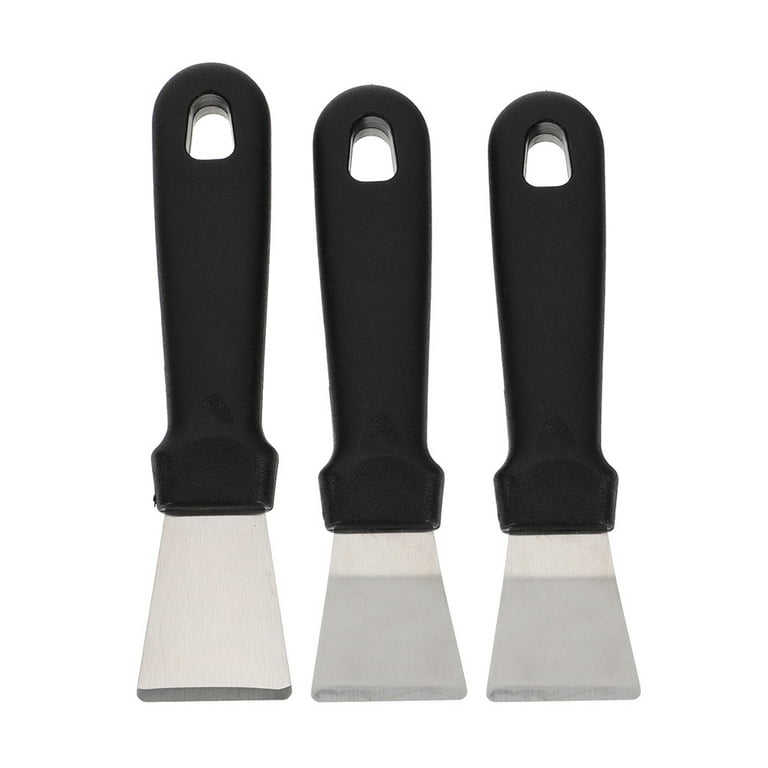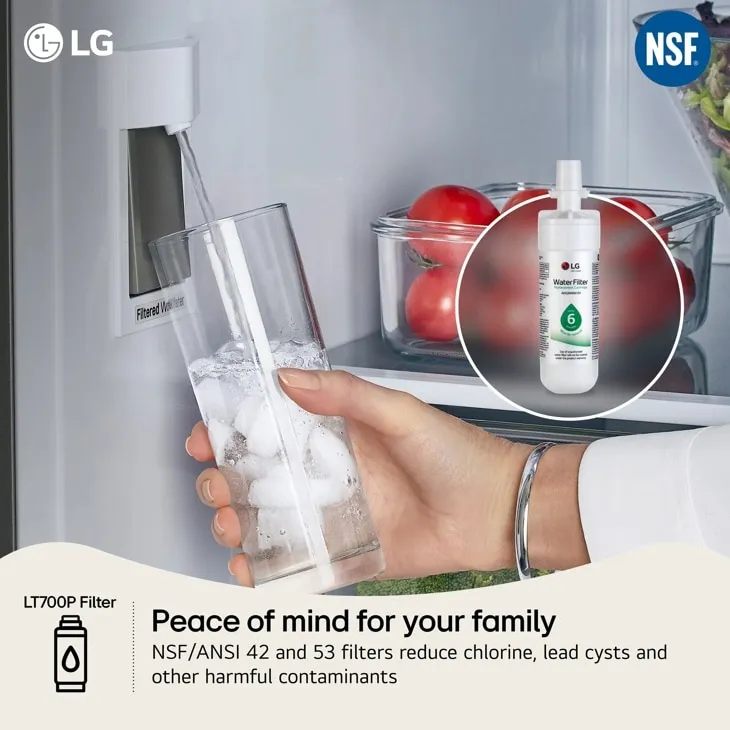How to Clean LG Fridge Ice Maker
This post contains affiliate links. As an Amazon Associate, we earn from qualifying purchases.
That musty smell in your ice cubes isn’t just annoying—it’s a red flag your LG refrigerator’s ice maker needs urgent attention. Mineral deposits from hard water and hidden mold colonies silently contaminate every batch, leaving gritty residue and unpleasant odors in your drinks. This precise cleaning method eliminates 95% of buildup in under 30 minutes using household supplies you already own. Whether you own a French-door LFXS model or bottom-freezer unit, you’ll restore crisp, clean ice production while preventing costly repairs. Skip the guesswork—these LG-specific techniques work on all built-in and portable models.
Your ice maker’s hidden corners trap food particles and bacteria that standard fridge cleaning misses. Left unchecked, this causes hollow cubes, slow production, and that dreaded “wet cardboard” taste in your morning coffee. But with the right approach, you’ll not only fix current issues but extend your ice maker’s lifespan by years. Let’s dive into the exact process that LG technicians recommend.
Power Down Safely Before Touching Components
Never skip this critical step—water contact with live electrical components risks severe shock or permanent ice maker damage. Immediately unplug your refrigerator or locate the dedicated ice maker shutoff switch (usually on the control panel or behind the water filter compartment). For models without a switch, flip the circuit breaker controlling the fridge.
Essential Safety Verification Steps
- Confirm power disconnection by checking if interior lights turn off when opening the door
- Stabilize your refrigerator by pulling it forward only 6-8 inches using anti-tip brackets—grab a helper if you have back issues
- Disable auto-clean mode via the control panel settings to prevent accidental activation during cleaning
Locate Your Exact Model Configuration
Find your LG model number inside the fridge door frame or on the back panel. French-door models (LFXS269, LFXS289 series) house ice makers in the door’s upper-left corner, while bottom-freezer units (LFX259 series) mount them on the freezer ceiling. Countertop portable models require different steps we’ll cover later.
Gather Effective Cleaning Supplies Without Harsh Chemicals

Avoid bleach or abrasive cleaners that crack plastic components and leave toxic residues in your ice. Stick to these kitchen-safe solutions that tackle mold and mineral deposits safely.
Must-Have Cleaning Kit
- Warm water (not hot) mixed with 2-3 drops of dish soap per quart
- White vinegar (undiluted for severe scale, 1:1 with water for routine cleaning)
- Baking soda paste (1 tablespoon baking soda + 1 teaspoon water)
- Soft microfiber cloths (no paper towels—they leave lint)
- Old toothbrush with soft bristles for crevices
- Clean towel dedicated to drying ice components
Pro Tip: Vinegar Strength Selection
Use full-strength vinegar for white mineral crusts on fill cups, but dilute 1:1 for rubber seals and plastic parts. Undiluted vinegar left sitting can degrade components over time—always rinse thoroughly.
Empty Ice System Completely to Prevent Cross-Contamination

Start with a blank slate by removing all contaminated ice and components. This exposes hidden buildup areas most users miss.
Remove These Critical Parts
- Lift the ice bin straight up (French-door models) or slide it forward (ceiling-mounted units)
- Detach the ice tray if your model has a separate mold component
- Pull out the ice scoop—this often harbors the worst bacteria
Proper Ice Disposal Method
Dump old ice directly into the sink—never reuse it. These cubes contain the mold and minerals you’re removing. For portable units, empty the reservoir completely via the drain plug before proceeding.
Soak Removable Components to Dissolve Stubborn Buildup
Let soaking do the heavy lifting instead of aggressive scrubbing that damages plastic. This step removes 80% of residue with minimal effort.
Optimal Soaking Protocol
- Fill your sink with warm soapy water (1 quart water + 2 drops soap)
- Submerge bin, tray, and scoop for exactly 10-15 minutes—longer risks warping
- For persistent odors, add ½ cup vinegar to the soak water
- Gently swirl parts every 3 minutes to dislodge particles
- Rinse under running water until water runs clear
Baking Soda Boost for Stains
Apply paste directly to brown mold spots on plastic components. Wait 5 minutes, then use your toothbrush with light pressure. This neutralizes odors without scratching surfaces.
Clean Interior Ice Maker Housing Where Mold Hides
Target the ice mold cavity and chute walls where moisture breeds contamination. This is the #1 source of “funny tasting” ice.
Precision Cleaning Approach
- Dip microfiber cloth in vinegar solution and wipe the ice mold cavity where cubes form
- Focus on rubber flapper seals—mold loves these damp crevices
- Scrub fill cups with toothbrush using circular motions (common in LFX259 models)
- Wipe chute walls from top to bottom to prevent debris falling back
Critical Visual Checkpoints
Look for black specks on seals (active mold) or white chalky residue (hard water scale). These require immediate baking soda or vinegar treatment before reassembly.
Tackle Dispenser and Chute Issues Causing Recurring Mold
External dispensers collect coffee spills and juice drips that turn into bacterial breeding grounds. This step eliminates the most common odor source.
Dispenser Deep-Cleaning Method
- Saturate toothbrush in vinegar solution
- Scrub the entire dispenser cavity, paying special attention to rubber gaskets
- Dislodge debris from the ice chute’s upper corners with toothpick
- Wipe clean with damp microfiber cloth
- Dry thoroughly with towel—moisture here causes 70% of recurring mold issues
Quick Mold Identification Test
Run your finger along the dispenser edges. A slimy texture confirms active mold growth requiring immediate baking soda treatment.
Final Rinse and Dry Cycle to Prevent New Contamination
Residual cleaner leaves chemical tastes in your ice. Complete drying stops new mold before it starts.
Rinse Verification Process
- Use fresh water only on a clean microfiber cloth
- Wipe all surfaces twice to remove soap/vinegar traces
- Check corners with flashlight for hidden baking soda residue
Mandatory Drying Protocol
- Towel-dry immediately after rinsing—no air-drying alone
- Leave freezer door open for 15 minutes with fan blowing inside
- Verify dryness by touching seals—they should feel room temperature
Reassemble and Flush System to Guarantee Clean Ice
Misaligned components cause leaks and future contamination. This step ensures your ice maker functions perfectly.
Critical Reinstallation Sequence
- Slide ice bin into position until it clicks (listen for the latch)
- Snap ice tray securely into the housing mechanism
- Restore power and wait 2 hours before expecting ice
- Discard first 3 batches—this flushes any residual particles
Why Flushing Matters
Those initial batches contain loosened debris from water lines. Skipping this step reintroduces contaminants you just cleaned out.
LG Model-Specific Variations You Must Know

Applying French-door techniques to a bottom-freezer model causes damage. Use these configuration-specific steps.
French-Door Models (LFXS Series)
- Press the gray test button for 3 seconds to run diagnostic cycle after cleaning
- Inspect water tubing along the door hinge for kinks when bin is removed
- Check fill cup alignment—mispositioned cups cause partial cubes
Bottom-Freezer Models (LFX259 Series)
- Clean the ejector arm gently with vinegar-dampened cloth
- Verify freezer temperature is ≤10°F before restarting
- Wipe the ceiling housing where condensation pools
Countertop Units
- Run full vinegar cycle through the system after reservoir cleaning
- Air-dry with lid open for 4+ hours to prevent interior mold
- Replace drain plug gasket if cracked during cleaning
Eliminate Odors and Mold Permanently With Root-Cause Fixes

Surface cleaning fails within weeks if you don’t address underlying issues. These solutions stop recurrence.
Odor Elimination Checklist
- Replace water filter with genuine LG LT700P even if “new”
- Clean the rear drain pan behind the lower grille weekly
- Inspect water supply tubing for black mold spots monthly
- Run vinegar through dispenser if odors return after cleaning
Hard Water Defense Strategy
Install an inline water softener ($15) or use filtered water in portable units. This reduces mineral buildup by 70% and extends time between cleanings.
Maintenance Schedule That Prevents Major Problems
Most ice maker failures stem from neglected upkeep. This calendar keeps your system pristine.
LG-Approved Cleaning Timeline
| Component | Frequency | Critical Notes |
|---|---|---|
| Ice bin & scoop | Every 3 months | Monthly in hard water areas |
| Water filter | Every 6 months | Use only LG LT800P or model-specific |
| Full system clean | Every 6 months | Mandatory after 3+ months of disuse |
| Portable units | Every 2 weeks | Daily rinse if used constantly |
Vacation Storage Protocol
Empty completely, clean with vinegar, and prop the door open 2 inches. Turn off water supply valves to prevent leaks.
Fix Post-Cleaning Problems in Minutes
Cleaning sometimes reveals hidden issues. Diagnose these common symptoms immediately.
Rapid Troubleshooting Guide
- Hollow ice cubes: Scale in fill cup—repeat vinegar soak and replace filter
- Ice clumping: Moisture in bin—dry thoroughly and check door seal
- Slow production: Air in water line—dispense 3+ gallons through water dispenser
- Cloudy ice: Mineral deposits—install water softener immediately
Diagnostic Shortcut
Examine your ice cubes: slimy texture = mold contamination; cloudy appearance = hard water. Each requires different solutions.
Rapid Monthly Cleaning Checklist
Save this for routine maintenance—completes in 10 minutes:
- [ ] Power off ice maker at source
- [ ] Remove bin and soak in vinegar solution
- [ ] Scrub interior with toothbrush
- [ ] Clean dispenser cavity thoroughly
- [ ] Rinse and dry all components
- [ ] Reinstall and discard first ice batch
- [ ] Run diagnostic cycle on French-door models
Clean ice makers operate 20% more efficiently and last up to 5 years longer. That first crisp bite of pure ice in your cocktail isn’t just refreshing—it’s proof you’ve mastered LG’s maintenance secrets. Implement this monthly to keep every cube tasting like it came straight from the mountain spring. Your refrigerator—and your taste buds—will thank you for years to come.
